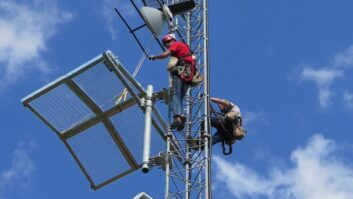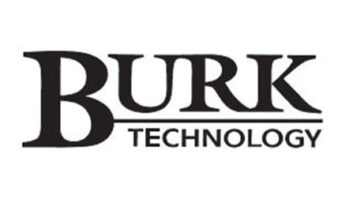

The Ampex 351 of Steve’s memory, as seen in a Gates Radio catalog from the early 1960s. Images are courtesy www.americanradiohistory.com.
When I was 13, I became enamored of sound and all things electronic. I think one of the reasons I went in this direction was that this was one profession my Dad knew nothing about and therefore could not tell me why I didn’t want to do this for a career. So here I am.
About a year later, after sending in 100 reader response cards, I got a real treasure in the mail. It was the Gates Radio catalog. This was a hardbound book in an orange cover. Ugly, but a thing of beauty in my eyes.
How many rainy days I would thumb through this catalog reading every word about the Gates “Yard” console (which I later knew personally) and the Gates “Executive” console, with its giant knobs and giant meters (which I also worked on at a few stations).
But the one thing I would stare at more than anything else in that catalog was the Ampex 351-2 tape recorder. Oh, was that ever a thing of beauty! How I would have loved to own one. What amazing things could I record with that monster.
I happened to casually mention this story at an SBE lunch in San Francisco. A few days later, my friend and mentor Art Lebermann, Chapter 40 chair and transmitter engineer for KGO(AM), gave me a call. He’s the one who got me into broadcasting back in the 1970s, and he wanted to know if I was serious about the Ampex 351-2, because they had one they were ready to throw away.
What a difference a few decades make! Now I was married; and while I have a very understanding wife, I thought that this would probably cross the line; so, with a tear in my eye, I passed on the opportunity.
Conservation of Technology
You will note I spend a lot of space in this column talking about the “death” of technology. But believe me, technology is like energy: It can’t be created or destroyed — only changed.
We still want to record sound today, but we don’t need an Ampex 351-2. In fact, you probably aren’t even using tape anymore. It’s all digital audio and server-based recording. And the quality has gotten better and better, so these days I rarely hear anyone talk about how “bad” digital is, or talk misty-eyed about analog tape.
Unless you are living under a rock, you realize that Moore’s Law continues, and our stuff gets better and faster and smaller and cheaper. And different forms of memory are coming down the pike, to put a terabyte on your fingernail.
I think this, too, is a dead-end, though, because all we really need is a giant memory somewhere, a “yottabyte” server — 1024 bytes (1,500 terabytes for everyone on earth). Then all you need is access. Your home video, your audio clip, your data bit stream, will all be there. You don’t care where it is stored as long as when you push the “play” button, the stuff comes back.
So where do we build this server? I think the perfect place, where it is cold and empty (this monster will be hot!) should be in Antarctica. A second one would go well in Siberia, where there are already a lot of computer programmers from the good old days of the Gulag.
And we’ll need a third yottabyte server. Since this is a RAID array, all three will constantly be writing all the data from one to the other. (That’s the only way not to lose anything.) So the third one has to “see” the other two.
The only place that would be possible is a Lagrange point in outer space above the equator. A Borg Cube in outer space. But since it would be really boring to work out there, I think that’s where we should send all of the criminal programmers/the hackers. It would be very easy to tell how well they are doing, and they’d develop some marketable skills for when they return.
Steve Lampen is multimedia technology manager and product line manager – entertainment products for Belden. His book “The Audio-Video Cable Installer’s Pocket Guide” is published by McGraw-Hill. Read past Wired for Sound articles under the Columns tab of radioworld.com.
###












